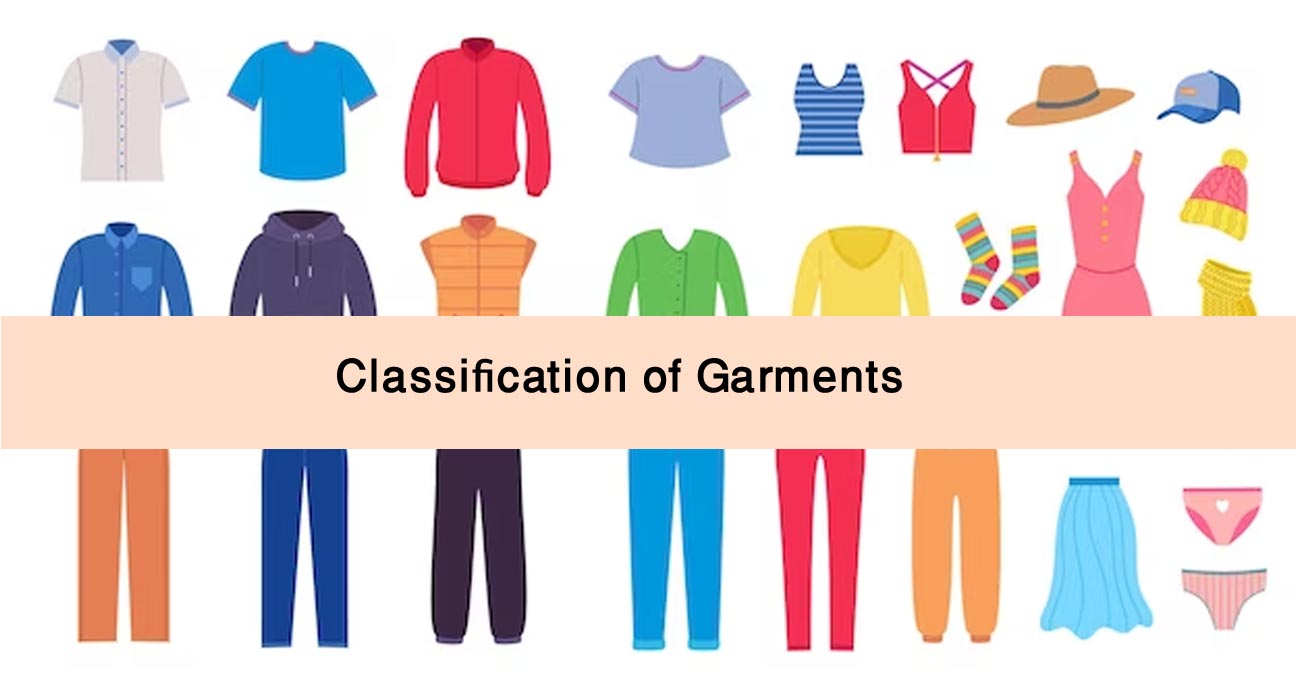In this article, we have discussed and focused on two basic terms. What is Garment and Classification of garments? Let’s start by answering the first question.
What is Apparel/ Clothing/Garment?
Garment means the fabric that takes different shapes as per the body measurement of human being by cutting & sewing. It is used for protection, decoration & identification.
Classification of Garments
Garments could be classified based on several aspects as there is no standard classification system available.
However, the garments could be classified based on gender as male or female, or age as children’s garments.
Generally, based on use, style, and material, different varieties of garments show different styles. Presently, the garments are classified based on the following aspects.
On Basis of Types of Fabric:
Season:
- Winter (jacket)
- Summer (tank top)
- Spring (singlet)
- Autumn (shirt)
- Late Autumn (shirt (design))
Classification of garments
Events:
- Party (fashion wear)
- Active (regular wear)
- Evening gown (outfit)
- Night (soft fit)
Application:
- Formal (collar shirt)
- Swimwear (bikini, cover-ups)
- Sportswear (trouser)
- Lingerie (inner wear, sleepwear)
Method of manufacture:
- Readymade (complete)
- Tailored (measurement)
- Furnishing (automated)
Source:
- Leather (leather)
- Natural (leaf)
- Artificial (fur)
Gender and age:
- Women’s (skirts)
- Men’s (tongo)
- Kid’s (toga)
- Toddler (bibs)
Shape and styling:
- Dresses (sari)
- Shirts (neck wear)
- Skirts (elastic and stitches)
- Suits (official outfit)
Length of garment:
- Shorts (panty wear)
- Three quarters (cargo pants)
- Full wear (pant)
- Bermuda wear (thigh wear)
- Pullover (stockings)





